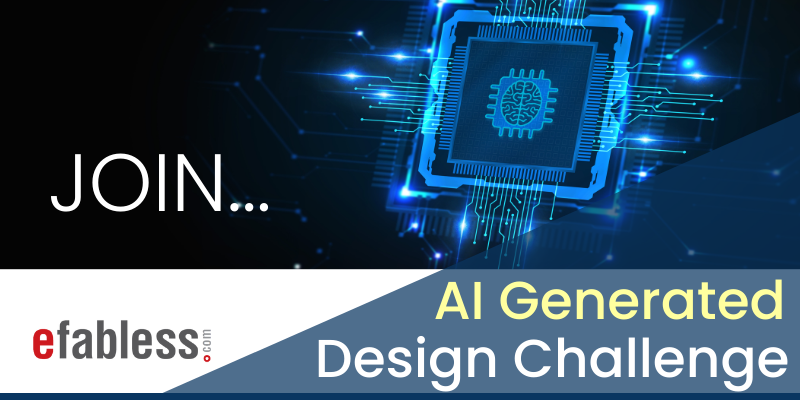
Last week, Efabless announced the second edition of its AI Generated Open-Source Silicon Design Challenge series. As we discussed in earlier blogs, the first challenge was a great success with twelve submissions and six successful designs created in just three weeks. The contestants used natural language prompts to create Verilog and implemented their designs using the Efabless chipIgnite platform and its OpenLane open-source design flow. The first-place winner was a co-processor by Hammond Pearce at New York University; you can read the story here. Silicon for the winners will be fabricated by Efabless and the devices are expected back at the end of October. The second challenge has the same guidelines but the time to design is extended from three weeks to two months.
There is obviously lots of interest in Generative AI in chip design. It promises to speed and simplify the design of chips, making custom silicon economically feasible across a previously unimaginable diversity of designs to meet the breadth of requirements for IoT and Machine Learning. That being said, there are still lots of questions. Are the data sets large enough to enable the LLM models required? How will verification be done to the appropriate levels of completeness? How will people learn and adapt to this new approach? Will the chips work? Will people actually trust that they do work?
Efabless plans to address these concerns and accelerate the emergence of the new world. They believe that the key is to engage the maximum number of potential users to drive the maximum number of designs, enable collaboration and sharing of experiences and designs and, last but far from least, to provide a full path to manufacturing because “the proof is always in the pudding.” The answer lies in open source and community models, an approach that Efabless has proven over the past several years.
Here is how:
Open Source is fundamental. By putting prompts and designs in the public domain they can be studied by others and used as starting points for future designs. In short order a vast array of examples will be created to expand the potential data sets. The use of the open source design flows and the automation offered by Efabless expands the number of potential designers (and therefore the number of designs) by lowering barriers to entry.
Community engagement adds to the success. It was remarkable how contestants openly collaborated in the first challenge, sharing their learnings in both design and verification. As the number of contestants grows it stands to reason that the collective insights will grow exponentially with it.
Prototyping is key. Last but not least, Efabless has addressed the last mile to manufacturing, making it both fast and affordable at scale. This enables attractive incentives for people to participate in the journey and very importantly it rapidly closes the loop to show which prompts, methods and, ultimately, AI generated designs are most effective.
Mike Wishart, CEO, has described the very logical fit of generative AI with Efabless and its mission to simplify design and open it to everyone. It now seems that Efabless will be a key enabler in accelerating its adoption.
Also Read:
Efabless Celebrates AI Design Challenge Winners!
Why Generative AI for Chip Design is a Game Changer
A User View of Efabless Platform: Interview with Matt Venn
Share this post via:





TSMC N3 Process Technology Wiki